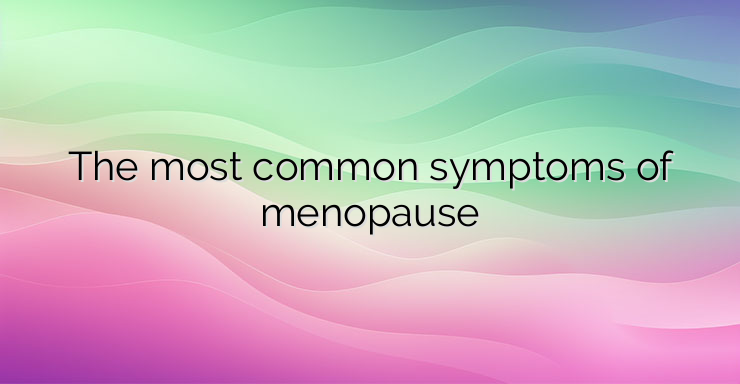Vasomotor symptoms affect most women during menopause, although their severity, frequency, and duration vary greatly from patient to patient. Hot flashes are reported by up to 85% of menopausal women. These symptoms appear in up to 55% of patients even before the onset of the irregular menstrual cycle, which determines the onset of menopause. Their frequency and expression increase as women go through menopause, peaking in late menopause and declining over the next few years. Heat waves The average duration of heat waves is about 5.2 years. Symptoms of lesser intensity, however, may be observed for a longer period of time. Approximately 25% of women continue to have hot flashes for 5 or more years after menopause. A meta-analysis including 35,445 participants from 10 different studies confirmed that the duration of hot flashes is 4 years, with the most prominent manifestations starting about 1 year before the last menstrual cycle and decreasing thereafter. The exact cause of hot flashes is not fully understood. Changes in the thermoregulatory system are thought to occur that are associated with changes in estrogen production. Other hypotheses suggest that hot flashes are related to changes in both estradiol and follicle-stimulating hormone (FSH) levels. Urogenital tissues are extremely sensitive to the action of estrogen, and the fluctuations in levels that occur during menopause, followed by the prolonged maintenance of low levels of this hormone after menopause, can make these tissues vulnerable and cause various symptoms. Vaginal dryness Numerous studies have shown that about 27% to 60% of menopausal patients are affected by moderate to severe symptoms of vaginal dryness or dyspareunia – pain and discomfort during intercourse. In addition to vaginal atrophy, narrowing and shortening of the vagina and uterus, prolapse may also occur, leading to marked dyspareunia. In addition, the urinary tract contains estrogen receptors in the urethra and bladder, and a drastic decrease in estrogen levels leads to an increased risk of developing urogenital infections. Unlike vasomotor symptoms, vulvovaginal atrophy does not improve over time without treatment. Sleep disorders and insomnia Sleep quality generally deteriorates with age, and menopause also affects these processes. A large number of patients report sleep disturbances when entering menopause. Studies have shown that a night’s sleep can be shortened by up to 25 minutes before entering menopause. Women experience sleep difficulties approximately twice as often as men. Another factor that affects sleep quality is the hormonal changes associated with menopause and aging.Over time, sleep difficulties become more common in women. In the postmenopausal period, more than 50% of patients are affected by sleep disorders. The link between sleep difficulties and menopause cannot be fully explained by hormonal changes. Consistent with this concept is the fact that the use of hormone therapy does not always lead to successful results in the treatment of sleep problems in middle age and later. Failure to develop proper habits for good sleep hygiene and mood disorders further contribute to the deterioration of its quality. Other factors also play a role in sleep duration. Patients with mood disorders, especially anxiety and depression, may have difficulty falling asleep and/or experience early awakening. Women over the age of 40 are often affected by difficulty falling asleep. Lower socioeconomic status and disturbances in the harmony of family relationships are social factors that are associated with poorer sleep quality. Disorders such as sleep apnea and restless legs syndrome should also be considered. Clinical consequences of insufficient nighttime sleep include fatigue and daytime sleepiness, which can be subjectively measured. References: https://www.ncbi.nlm.nih.gov/pmc/articles/PMC4890704/


Leave a Reply